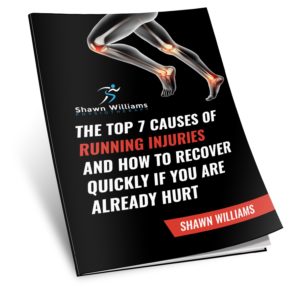People begin running for exercise for a variety of reasons. You may be trying to lose weight, reduce your risk of cardiovascular disease, train for a race, and/or looking for a new way to stay active. Whatever the reason you decided to start running, you can reduce your risk of running-related injury or burnout by reading this post and taking this advice for beginner runners.
Attempting to follow a generic online running program can put you at risk for injury because it not personalized to you. The best way to prevent injury is to increase your running slowly, listening to your body and keeping your pre-existing fitness level in mind.
You have likely heard the phrase “you must walk before you can run.” Well, this is a great thing to keep in mind as you begin your running program.
Depending on your current fitness level, it may be best to begin by going for a few 30-minute brisk walks per week. Only when you feel comfortable walking at a brisk pace for an extended period of time, is it time to start running.
Running should be introduced gradually, beginning with walk/run intervals. Start with a 1:1 ratio (one minute of walking to one minute of running), and then very slowly increase the length of your running intervals. If possible, try to keep your walk intervals to one minute, as you do not want your muscles to cool down too much between running bouts.
When determining your running pace, consider the sing-talk-gasp test. You should be working hard enough that you unable to sing while you run, but not so hard that you are gasping. You will know you are at the right pace when you can maintain a conversation comfortably.
Once you feel you are ready to further progress your running, you must keep the 3 Fs in mind: 1. How frequently are you running? 2. How far are you running each time? 3. How fast are you running?
Only focus on one F at a time when increasing your training. It is important to only make small increases and to do so slowly. Trying to ramp up your training too quickly may cause an injury.
Usually it is recommended you begin by slowly increasing the frequency of your running. For example, if you were running twice a week, begin running three times a week. Stay at this new frequency for at least three weeks; do not try to increase frequency too quickly.
Next you can slowly increase how far you are running. Again, small increases in distance are vital. You should not increase your distance by more than 10% per week.
Finally, you can increase how fast you are running. Speed should be last because it directly proportional to injury risk. Like distance, you should not increase speed by more than 10% per week,
Finally, you can increase how fast you are running. Speed should be last because it directly proportional to injury risk. Like distance, you should not increase speed by more than 10% per week, the slower the better.
Follow this advice for beginner runners and you will have a much lower risk of injury. If you have already increased your running too quickly resulting in pain injury, or are looking for a personalized running program to avoid injury, contact us by sending us an email, or giving us a call or text at 416-660-4187 or request a free phone consultation. You may also want to download my free report The Top 7 Causes Of Running Injuries And How To Recover Quickly If You Are Already Hurt




